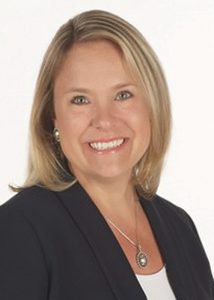IS PROFESSIONAL LIABILITY
“OUT OF THE WOODS?”
Capacity proves to be resilient for a line
previously under stress
By Joseph S. Harrington, CPCU
If the market for professional liability or “errors and omissions” (E&O) insurance seems to be “out of the woods,” it’s because it never got into them, or at least not too deeply.
For our purposes, “the woods” would indicate highly distressed market conditions—think commercial auto and excess liability. The market for professional liability coverage has certainly hardened in the wake of soaring jury verdicts, but adequate capacity support-ed by disciplined underwriting and pricing has served to avoid any serious market disruption.
“The E&O market continues to be strong, as professionals recognize the importance of the coverage, particularly for cyber,” says Sarah Medina, president, professional liability, at The Hanover Insurance Group, Inc. “While there are always new entrants and less stringent standards, pricing continues to increase in response to inflation and loss trends.”
“Trends differ somewhat based on the type of profession, but for most of the firms, capacity remains readily accessible,” says Andrea Potetz, head of professional liability product development for The Hartford. “Rates have tempered for some classes, but professions in which inflationary costs trend higher are less likely to see that shift.”
Nick Kohlhof, a client executive for independent brokerage Holmes Murphy, observes that “professional liability coverage has tracked with the hard market in terms of pressure on rates, capacity, and underwriting scrutiny.

“Third-party financial damages caused by an inability to operate are much higher than they were three years ago. If a machine or part fails, there is a much longer turnaround time for replacement parts and labor.”
—Nick Kohlhof
Client Executive
Holmes Murphy
“It seems as though there are fewer insurance carriers coming to the table, and I’ve noticed a more involved and detailed underwriting process,” Kohlhof says. “In some cases, this has had more impact than the pricing itself, especially in manufacturing, where there is increased attention to the potential impact of a design flaw or production error.” (Kohlhof specializes in covering professional liability of manufacturing, construction, and distribution firms, and his comments reflect conditions in those sectors.)
Monica Minkel, Holmes Murphy’s vice president and executive risk enterprise leader, says that “underwriters are asking more questions and requiring greater detail, but pricing is largely stable, with increases for growth in client revenues and exposure. Rate adjustments have stabilized and are largely single digit.”
Minkel finds that capacity remains strong for lawyers, accountants, technology firms, financial services, and other professions, with some carriers expanding capacity they allocate for technology E&O coverage. “Individual carrier limits are generally capped at $5 million,” she says, “but markets that maxed out at $3 million a year ago are back to $5 million. Few carriers are offering $10 million or more.”
Verdict inflation
It’s not surprising that some carriers might balk at providing higher limits, given the recent increases in liability claim severity. “Cases that go to jury are returning verdicts much higher than two years ago,” Minkel says. “Verdict inflation is real and here to stay.”
While liability claims frequency seems to be fairly consistent with premium, Medina sees claims inflation taking on a momentum of its own. “Increased verdicts are raising plaintiffs’ expectations, slowing down resolution time, and leading to higher costs to defend and resolve matters,” she says.
According to Kohlhof, challenges in the external business environment, including inflation, difficulties in hiring and retention, and supply chain bottle-necks, have impacted both the frequency and severity of professional liability claims in the sectors he serves.
“Third-party financial damages caused by an inability to operate are much higher than they were three years ago,” he explains. “If a machine or part fails, there is a much longer turnaround time for replacement parts and labor. The indirect costs, such as payroll and overtime, missed deadlines, and loss of income, are likely to be greater as a result.

“New employees handling long-term client relationships may discover that prior employees were providing services beyond those captured in a service agreement … and employees facing larger workloads are more prone to human error.”
—Andrea Potetz
Head, Professional Liability Product Development
The Hartford
“This situation has prompted more suits against manufacturers and resulted in greater claim costs,” Kohlhof says. “In the past, businesses might accept these losses as the cost of doing business, but when downtime increases and losses start to stack up, there’s a greater likelihood they’ll seek reimbursement from a third party.”
Kohlhof adds that professional liability coverage is increasingly required, explicitly or by implication, under con-tracts or purchase orders. He finds that contracts now commonly assign liability to following manufacturers of components, with or without insurance requirements. “This can be dangerous,” he says. “Many firms are simply ‘checking the box’ of an indemnity agreement without realizing they are accepting additional liability that may not be insured.”
Labor and supplies
As noted, claim costs are compounded by the tight labor market and supply chain troubles.
“In any environment in which employee turnover exceeds expectations, professional firms face increased expo-sure to errors or omissions,” says Potetz. “New employees handling long-term client relationships may discover that prior employees were providing services beyond those captured in a service agreement, for example, and employees facing larger workloads are more prone to human error.”
According to Kohlhof, constraints on capacity in manufacturing and distribution—staffing shortages and supply chain constraints—have a direct impact on the severity of professional liability claims. “These factors increase the impact of any interruption and make incidents of professional liability more expensive,” he says.
The same holds true in the construction sectors, according to Anthony Dolce, The Hartford’s head of professional liability and cyber-technology E&O. “For architects and engineers, we are seeing increased severity in delay claims driven by inflated material costs, labor short-ages and supply chain issues,” he says.
Medina sees independent insurance agencies facing the same staffing problems that clients face.

“[F]ewer new accountants and attorneys are entering the workforce. … This lack of capacity, coupled with higher turnover, leads to a greater potential for errors.”
—Sarah Medina
President, Professional Liability
The Hanover Insurance Group, Inc.
“Many insurance agencies are feeling the pressure of staffing shortages,” she says. “Expertise is lost as experienced producers and account managers retire, while the volume of policies and administrative work strains agencies’ ability to expand their businesses and win new clients.
“Finding the right talent is certainly a challenge across our industry, but we have invested heavily in developing professionals early in their careers from within our organization.
“As for our insureds, fewer new accountants and attorneys are entering the workforce, choosing instead to pursue careers in industries they view as more innovative, such as tech,” Medina says. “This leaves professional service firms with the same challenges insurance agencies are facing—fewer people to do more work.
“This lack of capacity, coupled with higher turnover, leads to a greater potential for errors.”
Silencing cyber
Carriers are doubling down on their efforts to exclude coverage from cyber losses from management and professional liability policies, and to relegate coverage to stand-alone cyber policies.
“Identifying ‘silent cyber’ coverage in other non-cyber policies has been an issue for established carriers for many years now,” says Dolce. “The insurance industry in general has a much better understanding now of the contours of coverage provided by true cyber policies versus non-cyber products.”
“Recent case law indicates that it’s important to cover cyber risk intention-ally and not rely on ambiguous language or limited endorsements,” says Minkel. “Stand-alone cyber policies almost always provide broader and deeper coverage than any bundled or endorsed cyber coverage and are preferable for most clients most of the time.”
Beyond that coverage, Minkel says the most important component of a stand-alone cyber policy is the crisis management team that carriers provide to respond to data breaches and other cyber events.

“Cases that go to jury are returning verdicts much higher than two years ago. Verdict inflation is real and here to stay.”
—Monica Minkel
Vice President and Executive Risk Enterprise Leader
Holmes Murphy
“Silent cyber will continue to be a concern with certain industry classes, like healthcare, where a cyber issue can result in bodily injury or property damage,” she adds. “Carriers on non-cyber policies are being more assertive in excluding cyber risk. We expect that to continue.”
Despite pressures to separate cyber coverage from professional and management liability risk, some accounts still want some overlap in coverage, according to Dolce. “We are seeing a mix of buyers,” he says. “Some are looking for the more fulsome coverage offered by a stand-alone cyber policy. Others are looking for a solution that will address both their E&O exposures as well as the cyber piece.”
To the extent that cyber coverage is provided on a strictly stand-alone basis, it becomes another line of coverage competing for each account’s premium dollars.
“Professional liability and errors and omissions coverage is usually as mall part of a client’s property/casualty insurance program, so it has rarely been a key discussion topic in the past,” says Kohlhof. “Now, we are making a point of discussing each individual client’s exposure to these claims and providing options at renewal time.”
For more information:
The Hanover Insurance Group
www.hanover.com
The Hartford
www.thehartford.com
Holmes Murphy
www.holmesmurphy.com
The author
Joseph S. Harrington, CPCU, is an independent business writer specializing in property and casualty insurance coverages and operations. For 21 years, Joe was the communications director for the American Association of Insurance Services (AAIS), a P-C advisory organization. Prior to that, Joe worked in journalism and as a reporter and editor in financial services.





